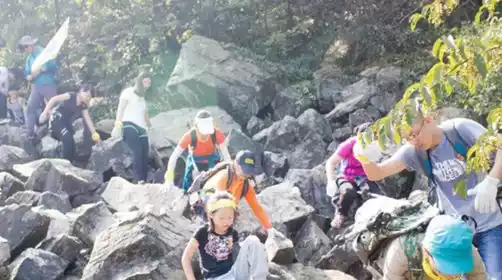Day 1 Shanghai → Changxing → Wushi Ancient Road → Shanghai
All day
Meet at the designated location of China-TravelNote at 07:30 and depart on time at 07:45. The tour leader will lead everyone to interact and have fun all the way.
We arrived at the trailhead around 10:45, packed our provisions and plenty of water, and set off along the mountain trail. In due time, we reached Shilang, a rocky outcrop where we needed to climb with both hands and feet, making sure to be careful as we headed down the mountain.
After crossing Wushilang, we crossed from Zhejiang to Jiangsu border, had lunch at the foot of the mountain and took a short rest.
After lunch, we'll hike deep into the bamboo forest, breathing in the fresh air. We'll then climb a hill, following the Qianlong Ancient Road, and continue along the bamboo path to the hidden Chong'en Temple on Qingshan Mountain. This ancient temple, secluded and rarely visited, is truly a Buddhist sanctuary. We'll have ample time to explore the temple and discover its story.
Around 16:30, we left the ancient temple and boarded the bus for the return trip. We arrived back at the departure point in downtown Shanghai around 20:00. Everyone was reluctant to leave and kissed goodbye with tears in their eyes!








